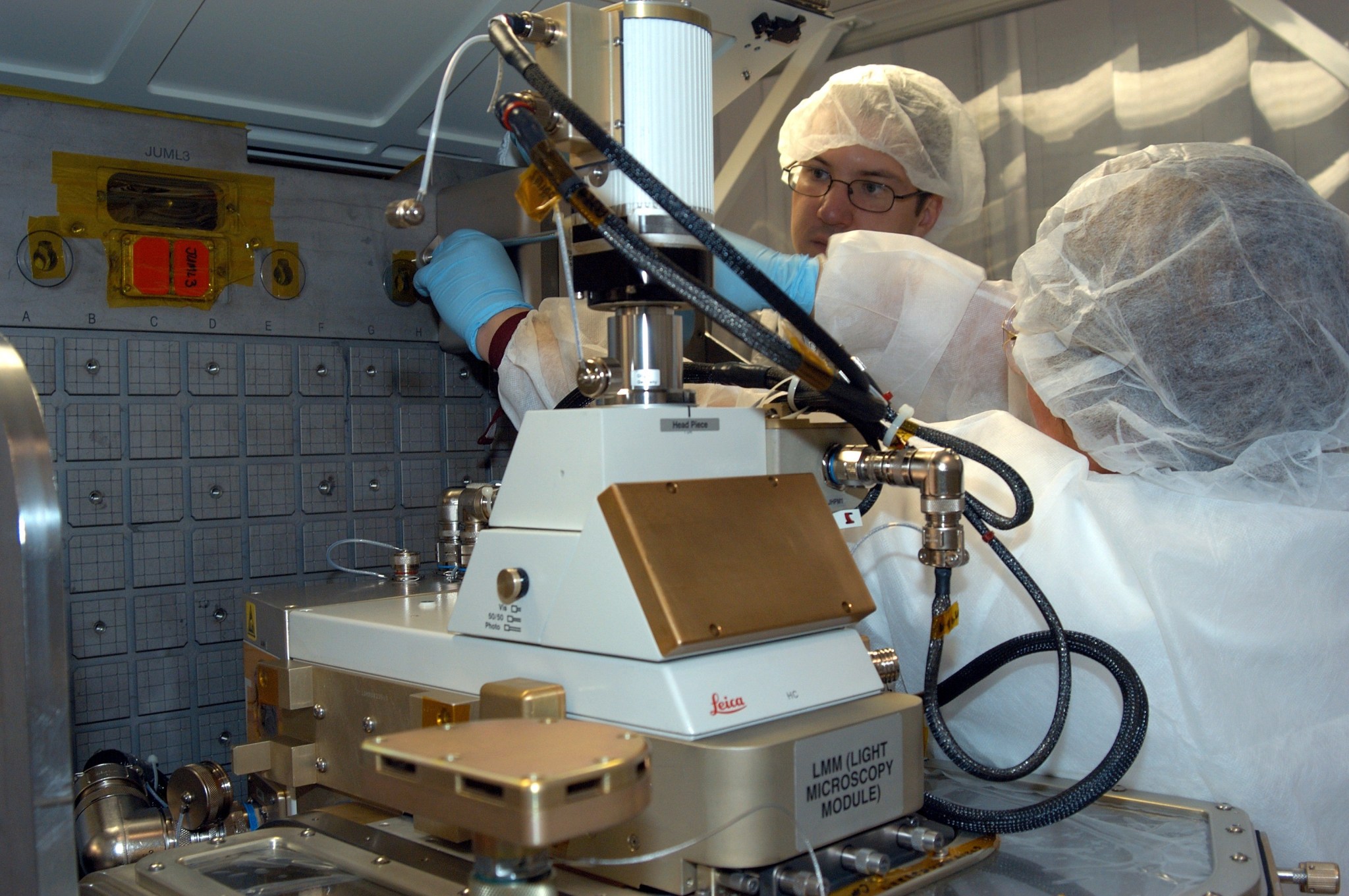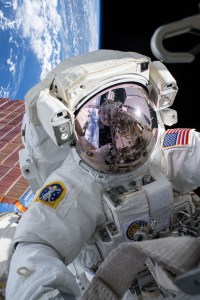When micron-size particles spontaneously self-assemble into 3D structures and replicate themselves, this will transform how we think about creating tiny machines.
The Advanced Colloids Experiment-with Temperature control-1 (ACE-T1) aboard the International Space Station is studying the controlled self-assembly of micron-size particles, each about 1/100th of a human hair in diameter. In this experiment, tiny suspended particles have been designed to move about and form in a predetermined way into 3D structures within water.
“Particles will someday be able to self-assemble into miniature micro-machines,” said Dr. William Meyer, ACE-T1 project scientist at NASA’s Glenn Research Center in Cleveland. “The functional 3D structures that scientists and engineers are beginning to create using self-assembled nanoparticles aren’t so complex that they have intelligence, but they’ll be sophisticated enough to create functional micro-devices.”
These tiny structures could benefit almost any field back on Earth: including photonics, communications, surgery, medicine delivery systems, robotics, and pumps.
“If you want to build really tiny machines like nanopumps to move fluids, for example, one nanopump doesn’t pump very much fluid,” said Meyer, “but when you create a method that enables you to build millions of self-replicating, self-assembling pumps, then suddenly you’ve got something really useful.”
ACE-T1 is a collaboration between NASA and Principal Investigator Professor Chang-Soo Lee of the Department of Chemical Engineering, Chungnam National University (CNU), Daejeon, South Korea.
To better understand 3D self-assembly at a molecular level, Lee and his team will study Janus particles. Named for the two-faced Roman god, these particles exhibit dual-properties. For example, half of their surface is hydrophilic and wants to interact with water. The other half is hydrophobic and is repelled by water. Getting them to spontaneously come together to form a useful 3D structure requires an understanding of this creative process.
“If you want Janus particles to come together in a predictable way, it can help to form particles whose ends have many different shapes,” said Meyer. “Some of the particles we are flying for the ACE-T1 experiment are made with ends that are convex or concave, and should assemble into 3D structures on the space station in the absence of particle settling.”
Scientists working with the ACE-T1 will use a controlled temperature to precisely heat the Janus particles, which are colloids suspended in water, to see how this impacts the creation of precisely organized structures.
“Small particles in a liquid typically move around because they have temperature,” said Meyer. “The higher the temperature the faster they move about. If you augment the process of particles self-assembling by applying a temperature gradient then you may be able to help them build crystals or nanobots and the like.”
Colloids are solutions where one substance is mixed in a liquid, solid or gas but is not dissolved in it. Think of muddy water. When dirt is stirred into water on Earth, lighter particles float to the top while heavier ones settle to the bottom. When particles quickly settle, researchers have little time to witness what is happening at the molecular level. However, in the microgravity environment of the space station, researchers can pause this settling behavior, giving them time to focus a microscope on them to observe the underlying physics.
Scientists will use the Light Microscopy Module (LMM) to see what happens at the particle level. A remotely controllable, automated microscope, the LMM, which operates in the Fluids & Combustion Facility, resides in the space station’s Destiny Laboratory and is managed by NASA’s Glenn Research Center.
ACE-T1 seeks to help scientists understand how to control, change, and even reverse interactions between tiny particles. This knowledge is crucial for developing self-assembling, self-replicating, nanoparticle technologies. ACE-T1 also lays the foundation for future space station work with other types of colloidal particles.
With the right influences, controlled Janus particles may do an about face and self-assemble into useful machines. By capitalizing on the dual nature of these particles, colloids hold the promise of enabling shape-selective interactions for building sophisticated 3D structures.
Mike Giannone
NASA Glenn Research Center





























